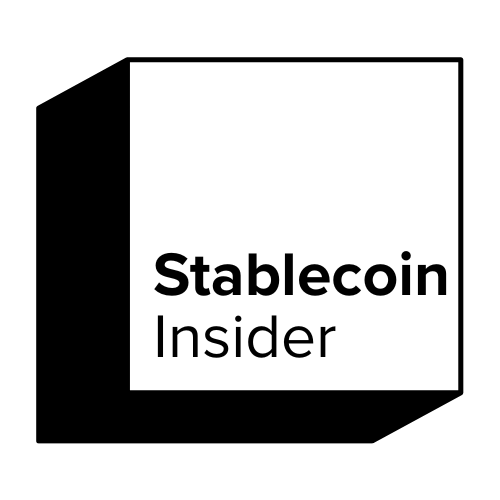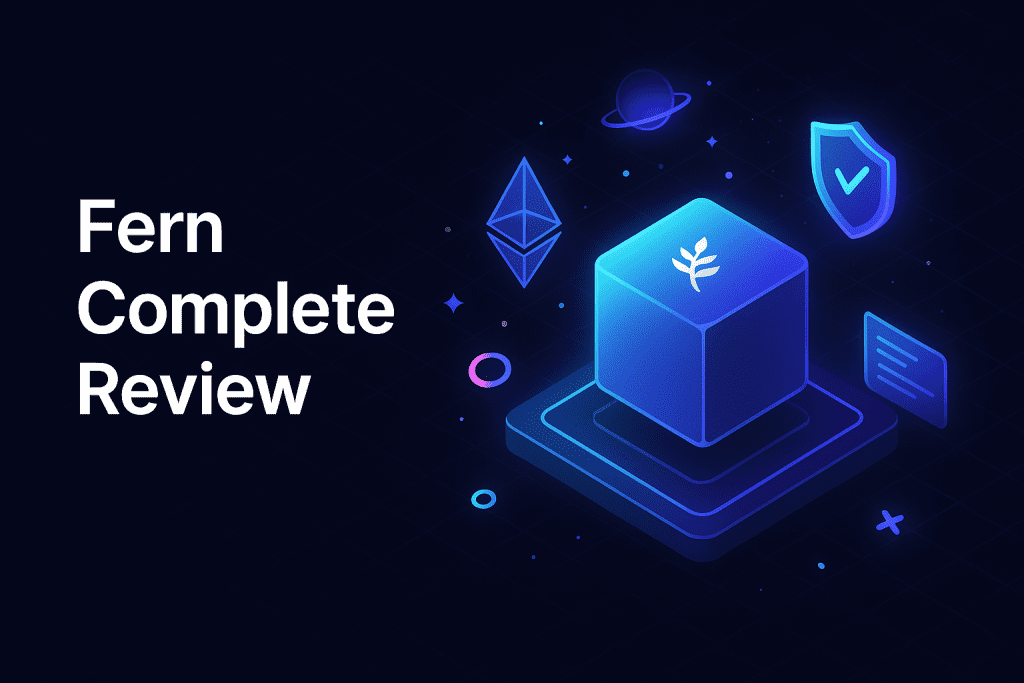Stablecoins have emerged as essential tools in the world of decentralized finance (DeFi). They offer the stability required to carry out everyday transactions and financial activities on blockchain platforms. Fern is one of the leading projects redefining how stablecoins work through decentralized infrastructure and a developer-first approach.
This review takes a comprehensive look at Fern, a company aiming to provide secure, interoperable, and trustless stablecoin solutions for Web3 and DeFi applications.
Key Takeaways:
- Fern is building decentralized stablecoin infrastructure to support DeFi applications.
- The project focuses on trustless, overcollateralized stablecoins.
- Fern is chain-agnostic and aims to support interoperability.
- The company provides tools for developers to integrate stablecoins seamlessly.
- This review covers Fern’s mission, architecture, tokenomics, use cases, pros & cons, and future outlook.
What Is Fern?
Fern is a decentralized infrastructure provider focused on stablecoin issuance and management. The project was launched with a vision to democratize access to stable, digital assets by removing reliance on centralized intermediaries. It differentiates itself by offering tools that empower developers and protocols to launch and manage their own stablecoins.
Vision and Background
Fern’s mission is to make decentralized stablecoins accessible, scalable, and secure. The founding team brings experience from blockchain development, finance, and security. Since inception, Fern has rapidly evolved to become a recognized player in the decentralized stablecoin space.
Key Milestones
- Launch of testnet and early developer tools
- Partnership with multi-chain DeFi protocols
- Deployment of overcollateralized stablecoin architecture
How Fern Works
Fern’s architecture is designed to ensure transparency, security, and full decentralization. At its core, Fern utilizes smart contracts to manage the issuance and redemption of stablecoins. The system is chain-agnostic, meaning it can function across various blockchain networks.
Core Architecture
Fern relies on a set of smart contracts that automate the processes of minting and collateralization. These contracts are open-source and undergo rigorous third-party audits.
Overcollateralization Mechanism
To ensure stability and minimize risk, Fern requires users to deposit more value than they borrow. For example, minting $100 worth of a stablecoin might require $150 worth of collateral, depending on market conditions and collateral type.
Interoperability Features
Fern supports Ethereum Virtual Machine (EVM)-compatible chains and plans to expand to other networks like Cosmos and Solana. This multi-chain approach makes Fern highly versatile and future-ready.
Fern’s Stablecoin Model
At the heart of Fern’s ecosystem is its unique stablecoin model. Fern issues fully backed, overcollateralized stablecoins that prioritize trustlessness and transparency. These assets are redeemable at any time and are governed by transparent rules encoded in smart contracts.
Minting and Redemption
Users lock up approved collateral assets in exchange for minting stablecoins. Redemption involves burning the stablecoins and unlocking the corresponding collateral.
Supported Collateral Types
Fern accepts various types of collateral including ETH, wrapped BTC, and select stablecoins. All collateral must meet strict criteria and risk parameters.
Risk Management
To mitigate risk, Fern employs:
- Liquidation engines to sell off undercollateralized positions
- Regular audits and oracle integrations for real-time pricing
Use Cases for Fern
Fern’s infrastructure opens doors for a wide range of financial applications. From decentralized exchanges to treasury management, Fern provides the foundational tools for stable digital economies. Its focus on flexibility and security makes it suitable for both developers and institutions.
Key Use Cases
- DeFi protocols: Use Fern’s stablecoins for lending, borrowing, and liquidity provision
- DAOs: Manage treasuries with transparent, decentralized stable assets
- Cross-border payments: Send stable value across chains without centralized intermediaries
Tokenomics & Governance
Fern operates with a native utility token that governs and secures the network. This token plays a vital role in incentivizing participants and facilitating decentralized governance. It also helps align the community’s interests with the protocol’s growth.
Token Utility
The Fern token is used for:
- Voting on governance proposals
- Staking and securing the protocol
- Paying protocol fees
Governance Model
Fern follows a DAO-based governance framework where token holders can propose and vote on changes. This democratic model helps ensure that decisions align with the broader community.
Developer Ecosystem
Fern is built with developers in mind. The company offers a suite of tools and resources that simplify the integration of stablecoin infrastructure into DeFi applications. This ecosystem-centric approach helps foster innovation and drive adoption.
Developer Tools
- SDKs and APIs for fast integration
- Open documentation and tutorials
- Sandbox environments for testing
Ecosystem Growth
Fern supports new builders through hackathons, grants, and community support. Early integrations include partnerships with decentralized exchanges and crypto wallet providers.
Advantages and Disadvantages
Like any project, Fern comes with its own strengths and weaknesses. While it excels in decentralization and developer experience, it faces challenges common to emerging DeFi protocols.
Pros
- Fully decentralized and transparent
- Strong multi-chain support
- Developer-friendly infrastructure
Cons
- Lower user adoption compared to centralized stablecoins
- Complexity for non-technical users
- Vulnerability to smart contract exploits (like all DeFi projects)
Fern vs Other Stablecoin Projects
The stablecoin landscape is competitive, and Fern positions itself against giants like MakerDAO, Liquity, and Frax. What sets Fern apart is its focus on cross-chain capabilities and modularity.
Comparative Analysis
- Fern vs MakerDAO: Fern offers multi-chain support from the start, unlike Maker’s Ethereum-first model.
- Fern vs Frax: Fern uses full overcollateralization, while Frax employs an algorithmic-fractional reserve.
- Fern vs Liquity: Both use overcollateralization, but Fern offers more customizable developer tools.
Future Roadmap and Outlook
Fern has an ambitious roadmap that includes new product launches, strategic partnerships, and community growth. As DeFi adoption increases, Fern is poised to become a key player in stablecoin infrastructure.
What’s Next for Fern
- Integration with Cosmos and non-EVM chains
- Launch of governance DAO and voting portal
- Developer grant expansion and funding ecosystem dApps
The outlook for Fern is promising, especially as users and developers demand more decentralized and transparent alternatives to centralized stablecoins.
Conclusion
Fern is tackling one of the most critical challenges in DeFi — providing stable, decentralized currency infrastructure without compromising on security or flexibility. Its focus on interoperability, developer tools, and decentralization positions it as a forward-thinking solution for the Web3 world.
Whether you’re a developer, investor, or DeFi enthusiast, Fern offers something compelling. As the ecosystem matures, Fern could very well become the backbone of decentralized financial applications.
Read Next:
FAQ
1. What makes Fern different from other stablecoin platforms?
Fern emphasizes full decentralization, overcollateralization, and multi-chain support, setting it apart from centralized or single-chain solutions.
2. Is Fern’s stablecoin live and available to use?
Fern has launched early versions of its stablecoin infrastructure. The mainnet release schedule can be found on its official site or community forums.
3. What chains does Fern support?
Fern is designed to be chain-agnostic and currently supports EVM-compatible chains like Ethereum, Arbitrum, and Avalanche, with plans to expand.
4. Is Fern safe to use?
While all DeFi platforms carry some risk, Fern uses overcollateralization, smart contract audits, and risk mitigation strategies to enhance safety.
5. How can developers integrate with Fern?
Developers can access Fern’s SDKs, APIs, and detailed documentation via the official website. Grant programs and technical support are also available for approved projects.

